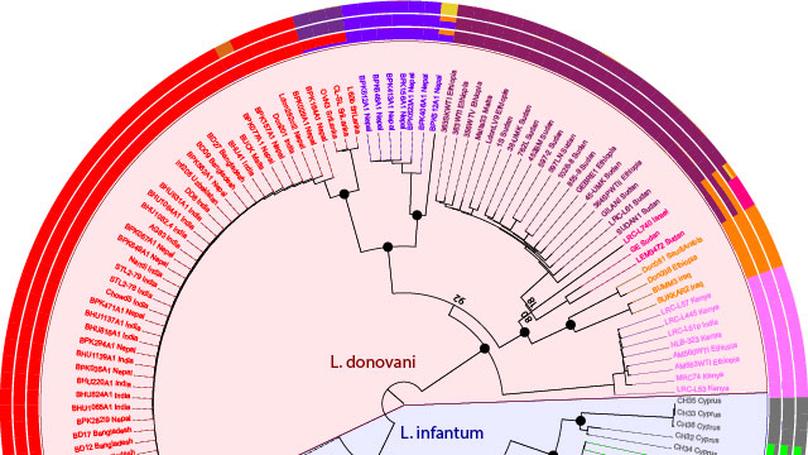James Cotton
Professor
School of Biodiversty, One Health and Veterinary Medicine, University of Glasgow
I am a researcher working on the genetics and genomics of eukaryotic parasites, particularly on parasites that cause neglected tropical diseases. I particularly enjoy working collaboratively, on projects that have both some implications for reducing the burder of NTDs but also raise interesting questions about the genetics or biology of the parasites themselves, or at least require some fun analyses.
I am now a Professor in the School of Biodiversity, One Health and Veterinary Medicine at the University of Glasgow. I am also a member of the Wellcome Centre for Integrative Parasitology. Before moving here in 2022, I was a senior member of the parasite genomics group at the Wellcome Sanger Institute with Matt Berriman for over 10 years. My research has focused on building genomic data resources for eukaryotic parasites, and then using those tools to understand various aspects of parasite biology. I am particularly interested in generating large-scale data on parasite genetic variation, and in understanding parasite population genetics, evolution and epidemiology. I have worked on quite a wide range of organisms, particularly Leishmania, the nematodes Haemonchus contortus and Guinea worm (Dracunculus medinensis), and recently Schistosoma.
- Parasites
- Genomics
- Neglected Tropical Diseases
- Evolutionary Biology
- Bioinformatics
Experience
Recent Posts
Projects
Featured Publications

Protozoan parasites of the Leishmania donovani complex - L. donovani and L. infantum - cause the fatal disease visceral leishmaniasis. We present the first comprehensive genome-wide global study, with 151 cultured field isolates representing most of the geographical distribution. L. donovani isolates separated into five groups that largely coincide with geographical origin but vary greatly in diversity. In contrast, the majority of L. infantum samples fell into one globally-distributed group with little diversity. This picture is complicated by several hybrid lineages. Identified genetic groups vary in heterozygosity and levels of linkage, suggesting different recombination histories. We characterise chromosome-specific patterns of aneuploidy and identified extensive structural variation, including known and suspected drug resistance loci. This study reveals greater genetic diversity than suggested by geographically-focused studies, provides a resource of genomic variation for future work and sets the scene for a new understanding of the evolution and genetics of the Leishmania donovani complex.